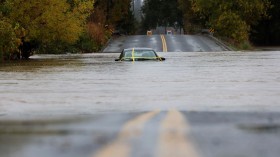A close analysis of ancient shells is showing that the Pacific Ocean's El Niño Southern Oscillation - one of the most powerful drivers of annual climate change, may have been just as strong 10,000 years ago as it is now, contradicting accepted models of our planet's climate history.
The results of this analysis are detailed in a study published by the peer-reviewed journal Science.
Study author Julian Sachs says that experts really don't understand the "El Niño mode of climate variation" as well as they thought they did.
"Our data contradicts the hypothesis that El Niño activity was very reduced 10,000 years ago, and then slowly increased since then," first author Matthieu Carré added in a recent release.
Using a complex analytical approach, the researchers examined piles and piles of shells stat dated from 100 to 10,000 years into the past. The composition of the shells was examined to determine the temperature in which they formed, which then allowed the researchers to determine the strength of the local El Niño.
According to the NOAA, an El Niño is a drastic and sudden warming of the oceans that leads to surges in precipitation and greater potential for storm formation. The NOAA recently released an update explaining that the National Weather Service expects a weak-to-moderate El Niño to show itself in the next few months, leading to "above average rainfall in the West and suppressed hurricane activity in the East."
Interestingly, Sachs's and Carré's new record shows that 10,000 years ago, shellfish were exposed to similar random surges in strong El Niño conditions.
"The polar ice sheet... was melting very fast in this period and may have increased El Niño activity by changing ocean currents," Carré explained.
The authors conclude that our understanding of past and present El Niño conditions alike are more lacking than once thought, and needs significant improvement. With being able to predict a changing climate and global influences being very important to today's climatologists, they may just be right.
© 2024 NatureWorldNews.com All rights reserved. Do not reproduce without permission.





